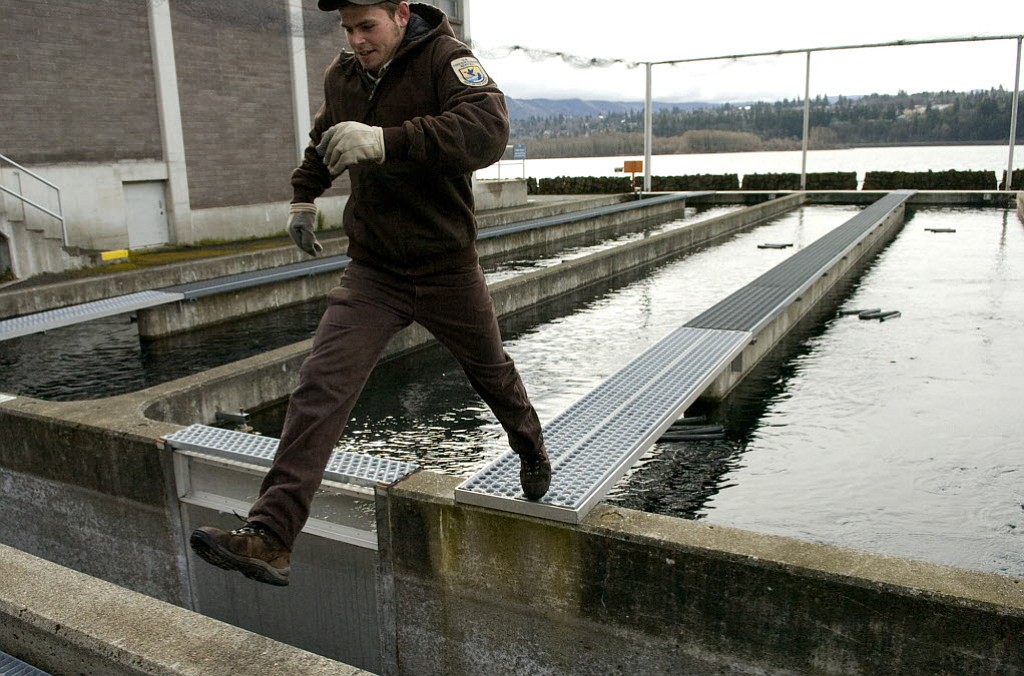Deepening drought conditions are forcing the region’s fish hatcheries to change the way they operate, and officials fear the worst is yet to come.
Both national and state-operated hatcheries in Washington have at times released fish earlier than planned due to warming water in the region’s rivers and streams. High water temperatures can make fish more prone to disease and death, and many have shown signs of stress this year, said Eric Kinne, regional hatchery operations manager with the Washington Department of Fish & Wildlife.
“We’re seeing late-August, early-September temperatures at the beginning of July,” Kinne said. “I don’t know what to expect here in another month.”
Last week, the U.S. Fish and Wildlife Service released 6 million fish from the Little White Salmon and Willard national fish hatcheries in the Columbia River Gorge about a week earlier than normal. Even if conditions are fine at a hatchery site, managers need to consider what the rest of the watershed looks like before sending fish on their way, said Rich Johnson, a fishery supervisor with the U.S. Fish and Wildlife Service. Waiting too long could hurt survival rates as waters get warmer, he said. But releasing fish too early carries its own risks, he added.
Waterways continue to run much lower than normal this year in Washington. Relentlessly hot weather in recent weeks has only compounded the problem that started with a dismal mountain snowpack last winter and spring.
“We were anticipating a bad year well before we got to this point,” Johnson said.
In addition to early releases, state and federal managers have experimented with aerators and chillers to add oxygen and cool the water at hatcheries. They’ve talked about adding shade or even temporarily relocating fish.
One of the state-operated hatcheries in the most trouble is located on the Washougal River. There, the water temperature is already 75 degrees during the day, Kinne said. The facility is holding nearly 3 million coho salmon that are supposed to stay there through the summer, he said.
Managers at the Washougal River hatchery are doing everything they can, but ultimately their options are limited, Kinne said.
“With salmon, it’s really hard, because it’s such a large volume of water that you need to cool,” he said.
Conditions at other hatcheries largely depend on the location and the water source. Some have fared better than others, Johnson said. The U.S. Fish and Wildlife Service operates 15 national hatcheries in its Pacific region; the state Department of Fish & Wildlife operates 16 hatcheries in Southwest Washington, Kinne said.
Johnson has spent 37 years working with Fish and Wildlife. Kinne has 22 years of experience. Both said they’ve never seen a year like this one.
“This is kind of precedent-setting, in my mind,” Johnson said. “I’m just hoping that next year moderates.”




